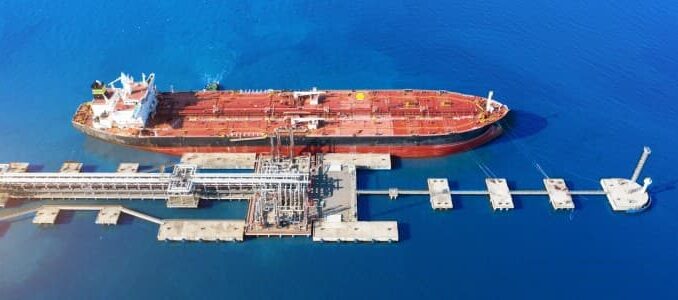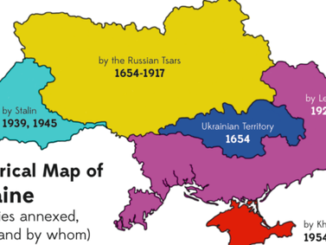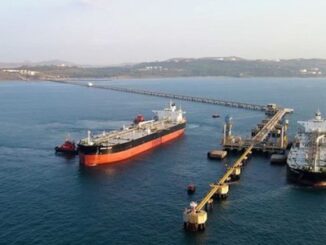
In the complex web of global energy politics, the European Union’s hesitation to slap oil-related tariffs on major Russian oil buyers like China and India is creating ripple effects far beyond trade balances. As of September 2025, this reluctance not only underscores the EU’s pragmatic approach to sanctions but also poses a fascinating scenario for de-escalating the ongoing Ukraine war. With President Donald Trump pushing for tougher measures while dangling incentives for U.S. LNG exports, and recent diplomatic overtures like the Alaska Summit hinting at backchannel business deals with Russia, the path to peace might lie more in economic carrots than punitive sticks. Yet, as the EU and Ukrainian President Volodymyr Zelensky ramp up escalation, the question remains: Can diplomacy through trade truly lure Vladimir Putin to the negotiating table?
This is compounded by the fact that the peace process was sabotaged by Boris Johnson and the intelligence communities in the first two weeks. Zelensky has been compromised and may not have the Ukrainians’ best interests at heart. Why would he want to end the war when he, as a failed comedian and actor, can now afford a ski resort and a $15 million car for his wife? President Putin may be right in suggesting that they consider holding elections soon in Ukraine to aid the peace process. No, wait, Zelensky canceled the elections and declared himself the President.
EU’s Cautious Stance Amid Sanction Talks
The EU’s wariness toward tariffs stems from a mix of legal hurdles and strategic priorities. Imposing such measures would require exhaustive investigations to build a solid legal foundation, a process that could drag on for months or years. Moreover, with ongoing trade negotiations with India—aimed at deepening economic ties—the bloc is loath to rock the boat. No formal discussions on tariffs against China or India have even surfaced in Brussels, according to officials. Instead, the EU is doubling down on targeted sanctions against specific Russian entities and individuals as part of its 19th sanctions package against Moscow. This targeted approach is seen as lower-risk, avoiding broader trade disruptions that could spike global oil prices and strain relations with key partners.
President Trump’s recent moves add another layer of tension. Prior to a high-profile conference in China earlier this year, the U.S. administration imposed additional sanctions on India, a voracious buyer of discounted Russian crude. These measures irked New Delhi, which has ramped up its Russian oil imports from $2.31 billion in 2020 to $52.2 billion in 2024, helping Moscow circumvent Western restrictions. India’s frustration was palpable, viewing the sanctions as an overreach that ignored its energy security needs. Now, Trump has drawn a red line: No further U.S. sanctions on Russia unless the EU completely severs ties with Russian liquefied natural gas (LNG) and natural gas imports—aiming for 100% elimination. This quid pro quo is tied to a broader U.S.-EU trade pact, where Europe commits to purchasing $750 billion in American energy resources by 2028, primarily LNG and fuel.
U.S. Energy Secretary Chris Wright has been vocal on this front, arguing that Europe’s continued purchases—52 billion cubic meters of Russian gas and 13 million tons of crude in 2024 alone—provide Moscow with vital war chest funding. In exchange for a full cutoff, Washington promises escalated sanctions on Russia, potentially including secondary tariffs on third-party buyers like China and India. European Commission spokesperson Anna-Kaisa Itkonen has echoed the sentiment, pledging to phase out Russian fossil fuels by 2027 at the latest, with a possible acceleration to January of that year. However, holdouts like Hungary and Slovakia warn of economic fallout, highlighting the domestic political fractures within the EU.
Escalation vs. Diplomacy: The Ukraine War Stalemate
This dynamic places the international community in a precarious spot for resolving the Ukraine conflict, now in its fourth year. The EU and Zelensky are indeed escalating: Recent rhetoric from Brussels emphasizes accelerating sanctions packages, while Zelensky has pushed for deeper NATO involvement and unrestricted use of long-range Western weapons against Russian territory. These moves signal a hardening stance, betting that economic pressure will force Putin’s hand. Yet, the EU’s tariff reluctance reveals cracks in this strategy. Without unified action against China and India—Russia’s lifeline buyers—sanctions lose their bite, allowing Moscow to redirect exports eastward and maintain revenues near pre-war levels. Russia’s oil production hovers at 9.01 million barrels per day, operating close to capacity, but infrastructure limits any sudden surges.
Enter the Alaska Summit of August 15, 2025, a surprising bilateral forum between U.S. and Russian delegations, including Trump and Putin. Absent the EU, UK, and Zelensky, the gathering focused on thawing relations through energy cooperation. Discussions touched on easing Western sanctions to revive Russian projects like Arctic LNG 2, potentially opening doors to joint U.S.-Russia ventures in the Arctic. This could stabilize global oil markets by channeling additional Russian supply to Asia, easing pressure on European prices without flooding the market. For U.S. consumers, it might mean lower pump prices; for Russia, restored access to Western technology could boost profitability.
The summit’s exclusion of traditional stakeholders was deliberate, positioning it as a “positive first step” toward broader peace talks. While no concrete business deals were announced, the emphasis on oil trade suggests a pragmatic pivot: Rather than piling on sanctions that Russia has largely weathered, collaborative energy projects could incentivize de-escalation. Imagine U.S. firms partnering with Rosneft on LNG exports or Arctic exploration—deals that fill American LNG terminals while giving Putin economic wins to tout domestically. This carrot approach contrasts sharply with the stick of endless sanctions, which have so far failed to deter Moscow’s military ambitions.
Business Deals Over Sanctions: A Path to Peace?
So, if the U.S. could forge business deals with Putin, would that drag him to the peace table faster than more sanctions? The evidence from Alaska leans yes. Sanctions have stranded some Russian assets but haven’t crippled its economy; oil revenues remain robust, funding the war machine. Diplomatic engagement, however, offers Putin a face-saving off-ramp: Economic normalization in exchange for territorial concessions or ceasefires in Ukraine. Trump’s “America First” lens prioritizes energy exports and market stability over ideological crusades, potentially aligning with Putin’s resource-driven worldview.
That said, risks abound. Zelensky’s escalation could undermine such efforts, portraying any U.S.-Russia thaw as betrayal. The EU’s internal divisions—exacerbated by Trump’s India sanctions—might fracture transatlantic unity further. And China, watching closely, could exploit divisions to lock in cheaper Russian oil, complicating global dynamics.
In this intricate energy chess game, the EU’s tariff hesitation might unwittingly pave the way for diplomatic breakthroughs. As Trump conditions U.S. action on Europe’s full divorce from Russian gas, and summits like Alaska hint at deal-making, the Ukraine war’s endgame could hinge on pipelines and profits rather than just penalties. For now, the world watches as oil flows east, sanctions stutter, and peace teeters on the edge of pragmatism.
Avoid Paying Taxes in 2025
Crude Oil, LNG, Jet Fuel price quote
ENB Top News
ENB
Energy Dashboard
ENB Podcast
ENB Substack







